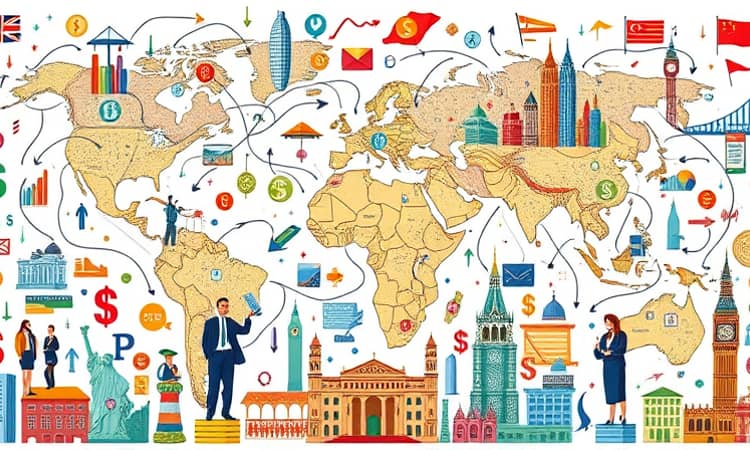In an increasingly interconnected world, the ability to understand and navigate complex financial interactions across borders has never been more critical. International finance offers a lens through which we can appreciate how currencies, investments, and economic policies intertwine to shape prosperity and stability worldwide.
From multinational corporations hedging against currency risks to governments coordinating monetary policies, the field of international finance provides essential tools and frameworks to manage global economic challenges. This article will guide you through its core concepts, institutions, and real-world applications, empowering you with insights to chart your own path in the global arena.
Definition and Scope of International Finance
International finance is the branch of financial economics that explores monetary and macroeconomic interrelations between two or more nations. It examines how different currencies are valued, how capital flows across borders, and how institutions collaborate to maintain stability.
At its heart, this discipline studies the interplay between governments, private enterprises, and financial markets in a world of diverse monetary systems. It addresses questions such as: How do exchange rates adjust? What drives foreign direct investment? How do countries manage balance of payments crises?
- Exchange rates and currency markets
- Balance of payments and current accounts
- International monetary systems and frameworks
- Foreign direct investment and capital flows
Key Concepts Shaping the Field
The foundation of international finance rests on several theories and models that explain market behavior and policy outcomes. Grasping these ideas equips you to forecast trends and design effective risk management strategies.
- Purchasing Power Parity (PPP)
- Interest Rate Parity
- The Mundell–Fleming Model
- The International Fisher Effect
- Foreign exchange risk management
For instance, PPP suggests that, over time, exchange rates should equalize the price of identical goods across countries. In contrast, the Mundell–Fleming Model analyzes how fiscal and monetary policies operate in an open economy. These frameworks help investors and policymakers navigate exchange rate fluctuations effectively and optimize cross-border capital allocation.
Major International Financial Institutions
Global cooperation in finance is facilitated by several key organizations that provide funding, research, and policy guidance. Their roles extend from crisis mitigation to long-term development support.
Through lending facilities, technical assistance, and policy research, these institutions foster frameworks for economic cooperation that underpin global growth and resilience.
Importance and Real-World Applications
International finance is indispensable for governments and businesses aiming to thrive in a borderless economy. It offers quantitative tools to assess risk, unlock investment opportunities, and support sustainable development.
- Benchmarking exchange and inflation rates
- Managing political and foreign exchange risk
- Expanding corporate operations overseas
- Guiding central bank interventions
- Linking global trade, capital, and policy
Consider a manufacturing firm planning to build a plant abroad. By applying hedging instruments and following balance of payments analysis, it can secure stable funding and shield itself from volatile currency swings. Similarly, policymakers rely on international capital market data to calibrate interest rates and safeguard economic stability.
Historical Evolution and Distinctive Nature
The modern era of international finance traces its roots to the 1944 Bretton Woods Conference, where allies crafted a system to prevent the competitive currency devaluations that worsened the Great Depression. That landmark agreement gave birth to the IMF and World Bank, setting the stage for decades of collaborative policymaking.
In the decades since, the field has evolved alongside technological advances and economic liberalization. After India’s 1991 reform, for example, emerging markets integrated into global value chains, illustrating how policy shifts can unlock transformational growth.
What makes international finance unique is its blend of financial decision-making, currency conversion, and stakeholder coordination across jurisdictions. It seeks to maximize shareholders' wealth on global stage while harmonizing commercial, economic, and accounting practices in a diverse monetary landscape.
Looking Ahead: Embracing Global Financial Literacy
As digital currencies, cross-border fintech platforms, and evolving trade agreements redefine the global economy, the demand for international finance expertise will only intensify. Whether you aspire to advise governments, manage multinational portfolios, or drive sustainable development projects, a solid grasp of this field offers a competitive edge.
By immersing yourself in its theories, building fluency in risk mitigation techniques, and engaging with international institutions, you can become a catalyst for positive change. The world awaits leaders who can bridge fiscal divides, champion equitable growth, and fortify economic stability. Embark on this journey to not only understand the mechanics of money across borders, but to shape a more prosperous and resilient global future.
References
- https://www.devry.edu/blog/what-is-international-finance.html
- https://www.freshbooks.com/glossary/financial/international-finance
- https://libguides.nypl.org/InternationalFinance
- https://en.wikipedia.org/wiki/International_finance
- https://www.tutorialspoint.com/international_finance/international_finance_introduction.htm
- https://fiveable.me/lists/key-international-finance-concepts
- https://www.imf.org/en/About/Factsheets/IMF-at-a-Glance














